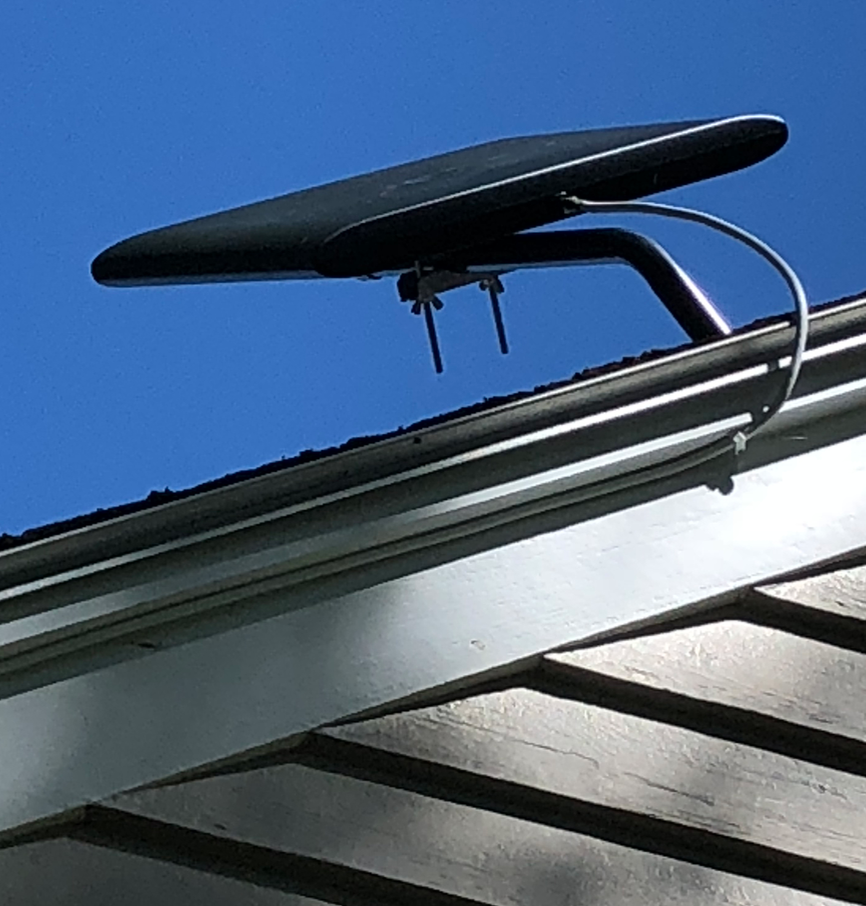Confessions of a Cord Cutter
The monthly Comcast bill arrived earlier this month and it was $28 higher with no services added. Time to cut the cable, the TV cable anyway.
The first task had nothing to do with technology, TV shows or saving money. It was convincing my spouse that cutting the cable was a good idea. After some gentle persuasion, she consented.
The next step was purchasing two Rokus for streaming. They installed easily and without a hassle. I also subscribed to DirectTV Now, which I mistakenly thought would give me unlimited live network TV, but I later discovered that’s not always the case. Irritatingly, networks and other content providers often make you jump through activation hoops the more you watch. Worse, we could not get full or live PBS programming.

So it was back to the future with over-the-air TV (OTA) using an antenna or what we Boomers used to call an aerial. I acquired a ClearStream FUSION Amplified UHF/VH HDTV outdoor antenna with a 60 mile range from AntennasDirect.com, the go-to people for antennas and advice about how to install them. The company provides a great video about to install it EXCEPT they omit talking about grounding the unit. More on that later.
The $100 unit (full disclosure: I acquired mine as a review unit through TVtechnology.com editor Tom Butts) is well built and easy to set up. Running a new coaxial cable is the biggest chore, but if you’re lucky with your antenna location, you can use existing cables installed by the cable provider. Higher is better for reception, which AntennasDirect can help customers with based on the location of area TV towers relative to your address.
I chose to run a new cable given the location of the unit on my roof. So drilling through a wall and running the cable outside and up to the antenna and around a couple of corners was the biggest chore. I pulled in 16 channels after running the required scan on my TV. The pictures are crisp and clear except NBC cuts out a good deal of the time.
Then I realized I had to install a ground on the mast and the cable. But with a house sitting on ledge next to a river in Maine, there was no way I could sink an 8-foot rod into the ground nor did I want the 10 gauge uninsulated ground wire dangling down the side of house beneath the antenna.
The professional video industry's #1 source for news, trends and product and tech information. Sign up below.
So I took the antenna off the roof and moved it into my attic, an atrociously hot, dangerous and dirty place to work accessible only by hatch. I hoped putting the antenna a dozen feet higher from the rooftop location would compensate for moving the antenna indoors. Indeed, the attic location picked up 16 digital TV channels including the three major networks, Fox and PBS with some pixilation especially with NBC, but not enough to matter much.
A few caveats: my unit purports to be good for more than one TV although AntennasDirect support told me reception takes a hit with that approach. Bear in mind, they want to sell more antennas. They also told me longer cable runs (don’t go more than 100 feet) affects reception adversely.
My OTA journey has been a success given from what I’ve learned and the satisfaction from cutting the TV cable. I also saved $100 a month in process, but still am beholden to Comcast for Internet. OTA and streaming are still somewhat of an adventure, but clearly are the future if not the present.
John Dodge is a freelance journalist living in West Newbury, Mass.
